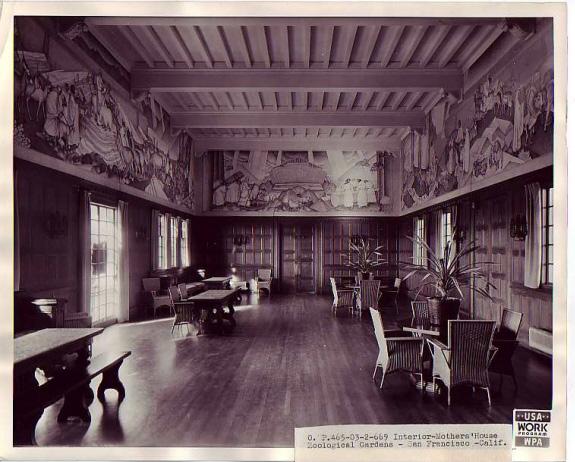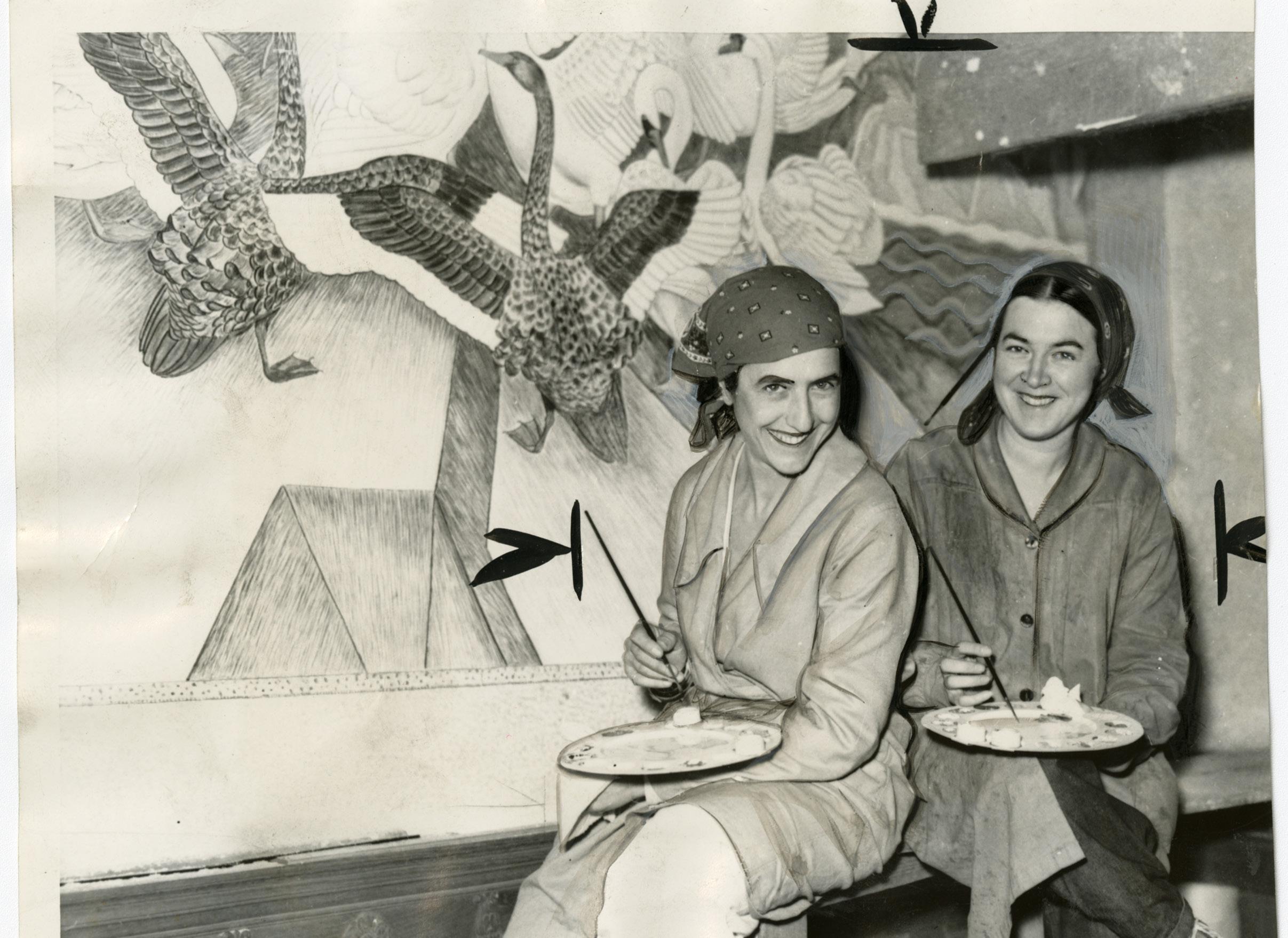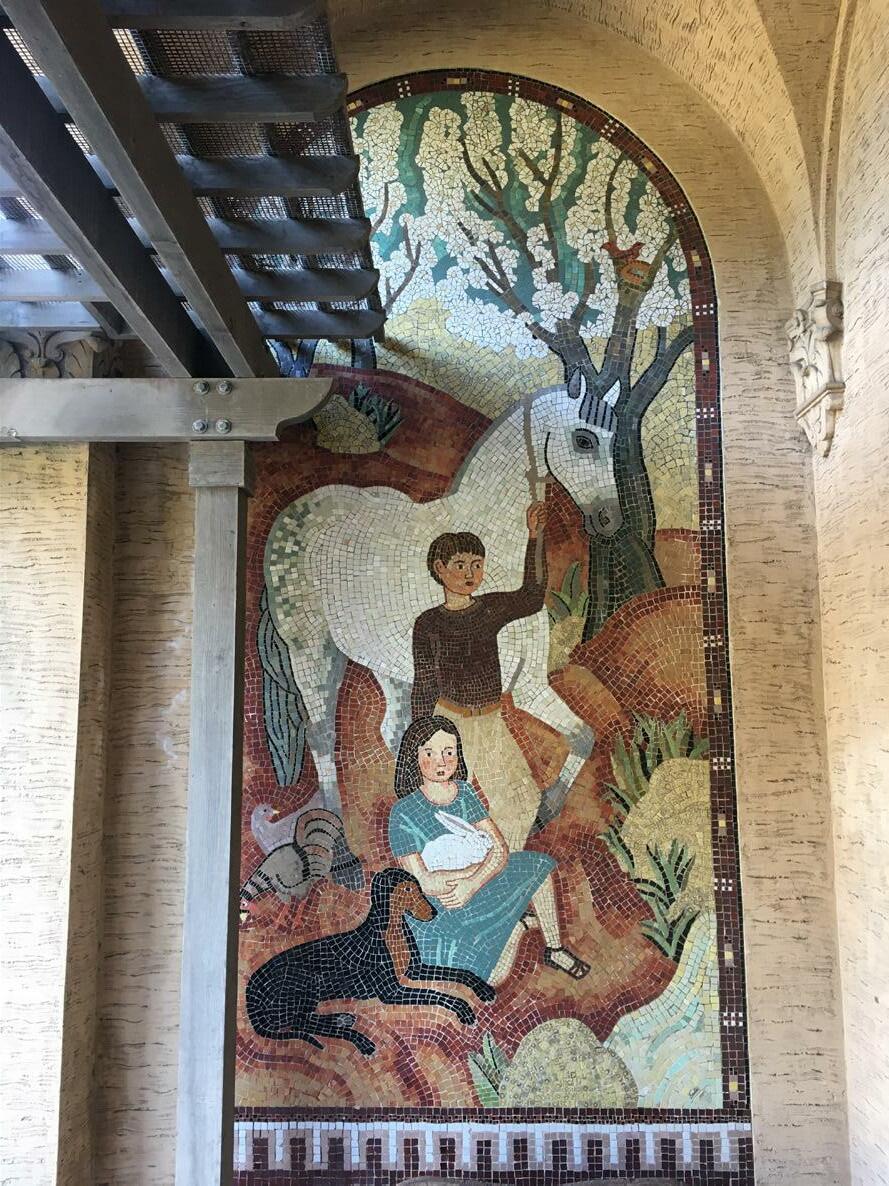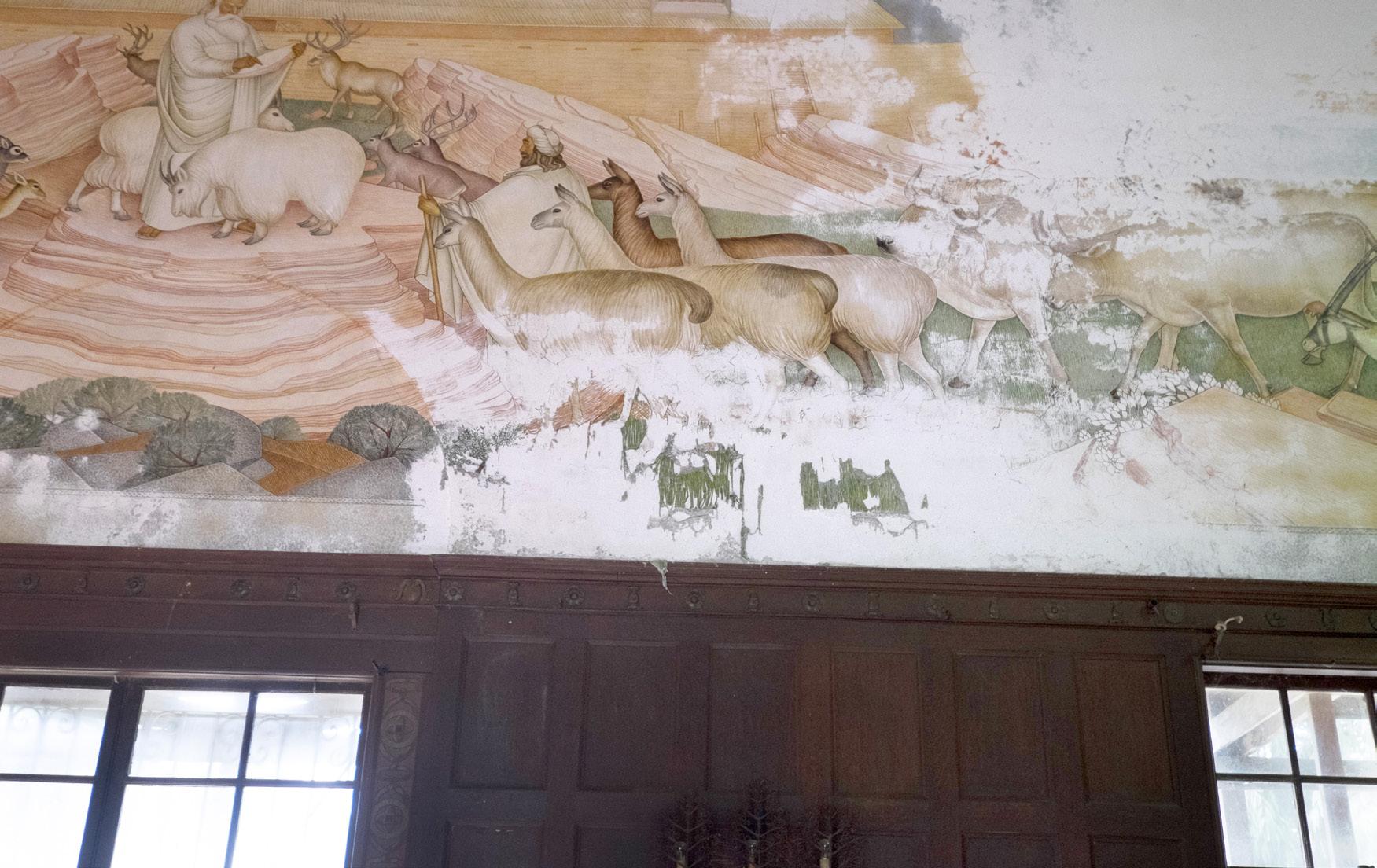
9 minute read
Cultural Erosion at the Mothers’ Building
By Isabel Scanlon Cultural Erosion at the Mothers' Building
Mothers’ Building and wading pool, circa 1934. (Courtesy of a Private Collector / wnp14.11465)
Advertisement
The Mothers’ Building has been closed and forlorn for almost as long as Western Neighborhoods Project has been around. The reason for that is complicated, with several overlapping city jurisdictions and a hefty restoration price tag at the center of the story. But through it all, one man has remained vigilant: Richard Rothman. Now, with the building’s 100th anniversary on the horizon in 2025, perhaps Richard’s hard work will finally pay off. Learn more about this story from our first paid intern, Isabel Scanlon.
As any San Franciscan knows, unless you’re sporting a wetsuit and a surfboard, swimming within city limits is generally reserved for our handful of public and - most importantly - indoor pools. On the three days a year that it’s warm enough to tempt some to wade out knee-deep in the surrounding blue, we become painfully aware of the loss of the grand swimming holes of San Francisco’s not-so-distant past. Perhaps because the ruins of the foundation are still visible, or because so many monuments of the city still bear the same name, the fallen Sutro Baths are likely first to haunt one’s memories. Then, perhaps only for those old enough to remember, follows Fleishhacker Pool, which San Francisco could once boast was the largest outdoor swimming pool in the world.
For younger San Franciscans or recent transplants, memories of these grandiose pools may not come to mind at all, seeing as any trace of them has been nearly erased. Sutro Baths closed in 1965 and was lost to a fire one year later, leaving only the foundations to be reclaimed as urban tidepools. Fleishhacker Pool held on a little longer, but waning use and critical damage to the drainage system after a storm permanently closed the pool in 1971. The San Francisco Zoo, as the last Fleishhacker Playfield recreation facility standing, was left responsible for the stewardship of the out-of-use pool and buildings. Over the years, most remnants of the pool were lost – the main bathhouse was demolished after a fire in 2012, and the pool itself was filled with gravel in 2002 and paved over to make way for the expanded zoo parking lot.
The only structure that survives today is the old Mothers’ Building. This small Italianate building was donated to the playfields and pool in 1925 by Park Commissioner Herbert Fleishhacker and his brother Mortimer, in honor of their mother, Delia. The Fleishhacker family – starting with Herbert and Mortimer’s father Aaron – made its fortune selling paper, developing the Comstock mines, and establishing electricity in California. They also established a legacy of cultural philanthropy in San Francisco.
The Mothers’ Building was originally intended by the Fleishhacker brothers as a site for mothers to lounge while their children swam, offering a place to get refreshments and even receive medical advice. But once the pool closed and the building’s future came into question, an additional facet of its historic value rose to the forefront: its murals. In 1934,

Mothers’ Building interior with egg tempera murals, February 15, 1939. (Courtesy of National Archives and Records Administration)
nearly a decade after the Mothers’ Building opened, the Works Progress Administration (WPA) hired artists Dorothy W. Puccinelli and Helen K. Forbes to install a series of egg tempera murals on the building’s interior walls. That same year, the WPA also hired artists and sisters Helen, Esther, and Margaret Bruton to install two mosaic murals in the exterior loggia. These murals quickly became not only a defining feature of the Mothers’ Building, but also a defining work in San Francisco’s catalog of public art.
The Bruton sisters’ bucolic mosaics of St. Francis, children, and animals cap each end of the loggia, greeting visitors before entry into the main room reveals Puccinelli and Forbes’s tempera renditions of Noah’s Ark. Floor to ceiling mosaic murals of this size were rare in California at the time. The Bruton sisters drew heavily on the guidance of Anthony Falcier, an Italian mosaic expert who worked on the marble medallion mosaic on the floor of the Ferry Building. While mosaic murals were common in Europe, architectural mosaics such as the Ferry Building’s were the only mosaics common in San Francisco. The scale of the Mothers’ Building’s egg tempera murals is also rare – the nearly story-high band runs continu-

Helen K. Forbes and Dorothy W. Puccinelli finishing their murals in the Mothers’ Building, June 4, 1938. (Courtesy of San Francisco History Center, San Francisco Public Library)
ously along the upper four walls of the main room. Their size was the brainchild of Puccinelli and Forbes, who were originally hired to paint only the four small lintels above the doors. They spun the opportunity into a much larger commission, designing murals for the entire building instead. They then convinced George Kelham, the building’s architect, to support their plans for larger murals in order to get their work approved by the WPA.
Even rarer than the murals’ size is their authorship. Although San Francisco saw somewhat of a mural art renaissance during the WPA-era public art stimulation of the 1930s, the WPA stipulated that only one person per household could be hired. Therefore, women were often limited from involvement in the work programs. As a result, no other large-scale WPA project was undertaken by female artists in San Francisco. The Bruton sisters ideated and assembled the mosaics together in their childhood home in Alameda, but because they belonged to the same household, only one of them could technically be hired by the WPA. Margaret Bruton attended the call for artists at the de Young Museum in 1933, where proposals were given to the Public Works of Art Project (later reworked into the WPA), but Helen was eventually the one to end up on the official PWA payroll. The sisters had to split Helen’s share between the three of them. Forbes and Puccinelli could both be hired, as members of separate households, but they had to occasionally put their work on pause when the incomes of their husband or father, respectively, pushed their household income above the WPA employment threshold.
During the years-long debate over the fate of the main Fleishhacker bathhouse, the Mothers’ Building similarly managed to evade both demolition and restoration. Its repurposing as the zoo gift shop from 1978 to 2002 ultimately saved it from the bathhouse’s demise, but by 2002 the effects of the ocean air and unstable sand dunes had taken their toll on the building. Seismically and structurally unsafe, the zoo closed the Mothers’ Building to the public once again. Constant exposure to humidity and salt was not kind to the egg tempera murals either, and although they were given “significant conservation treatments” in 1990, according to the San Francisco Arts Commission, moisture has faded the paint and eroded some portions entirely.1

Mosaic murals, 2022. (Courtesy of San Francisco Heritage)

As its 100-year anniversary looms, the Mothers’ Building remains closed and at risk. However, the failure of the restoration project has not exactly been for lack of trying. In fact, various groups have pushed for the building’s restoration since its original closure. In 1979, when the city was contemplating the best site for the new Southwest Sewage Treatment Plant, the Fleishhacker bathhouse was floated as a possible location. Wastewater officials roped the Mothers’ Building into the plans as the potential location for displaying photographs and architectural drawings that would, in theory, be collected as historical documentation of the bathhouse before its demolition. The National Advisory Council on Historic Preservation and the California State Water Resources Control Board jointly hoped that proper documentation of the bathhouse and restoration of the Mothers’ Building could act as “mitigation” for the demolition of the historic structure.2 The Mothers’ Building was spared mostly because it was just beyond the site the wastewater agency had its eyes on, but also because, as wastewater official Louise Stoll eloquently pointed out, “It has murals in it and is pretty.”3 Ultimately this proposed plan for the bathhouse and Mothers’ Building was lost in bureaucratic miscommunication and scrapped. The issue of restoration did not arise again until 10 years later, when the city sought $2.4 million in state funds for repairs, which they appropriately announced during Women’s History Month in 1991. Needless to say, the proper funds were not secured, but this restoration effort was notably the first instance in which the significance of the building’s female artisanship was placed at the forefront of the conversation. While the building’s structure remained at risk, the 1991 campaign for funds may have been successful in securing protection for the murals, since they were significantly conserved sometime around 1990, as mentioned above.
In 2014 the Recreation and Parks Department received a $102,484 grant to do an assessment of the building’s structural condition and seismic readiness, which left the undertaking with the new price tag of $5 million in repairs. This hefty number revealed perhaps the issue at the heart of it all: exactly whose responsibility is it to cough up the cash? “We would love to,” said zoo deputy director Joe Fitting, “but our number one priority is safety, animal wellness and welfare.”4 Afterall, the zoo is only an overseer of the Mothers’ Building, and historic preservation seems to be beyond the purview

Egg tempera mural on the west wall with visible water damage, 2017. (Courtesy of Richard Rothman)
of their zoological mission. The responsibility perhaps then falls to the actual owners of the building, the Recreation and Parks Department. They, however, claim their hands are tied, citing restoration alone as not a powerful enough driver to raise the necessary funds.
Today the biggest advocate for the Mothers’ Building is Richard Rothman, a retired city employee and member of the Park, Recreation, and Open Space Advisory Committee. He specializes in saving WPA murals, and as a Coit Tower tour guide and WPA mural photographer, he is no stranger to San Francisco’s New Deal-era gems. Rothman founded the Friends of the Mothers’ Building Facebook group and has been the main contact between the Recreation and Parks Department and Mothers’ Building advocates.
Thanks to Rothman’s advocacy, the Mothers’ Building restoration may be gaining the most traction it has in decades. On March 15, 2022, landmark designation for the Mothers’ Building was proposed to the Board of Supervisors by District 7 Supervisor Myrna Melgar and co-sponsor District 4 Supervisor Gordon Mar. Landmark designation would limit demolition or alterations, but in terms of preservation, the city is gambling against a fast-approaching deadline. According to the 2014 assessment, the murals should be repaired before 2024. Already up to 50% of the tempera mural on the west wall may be beyond saving. At stake is more than just the loss of a historic structure, but the loss of a rare display of female craftsmanship, a significant mark of New Deal legislation on San Francisco, and the remaining memory of Fleishhacker Pool and Playfield.
1. “SF looks for sources of funding to restore historic
Mothers Building,” San Francisco Examiner, June 6, 2016. 2. “Problems that thrive in bureaucracy byways,” San
Francisco Examiner, November 23, 1979. 3. Ibid. 4. “SF looks for sources of funding to restore historic
Mothers Building,” San Francisco Examiner, June 6, 2016.







